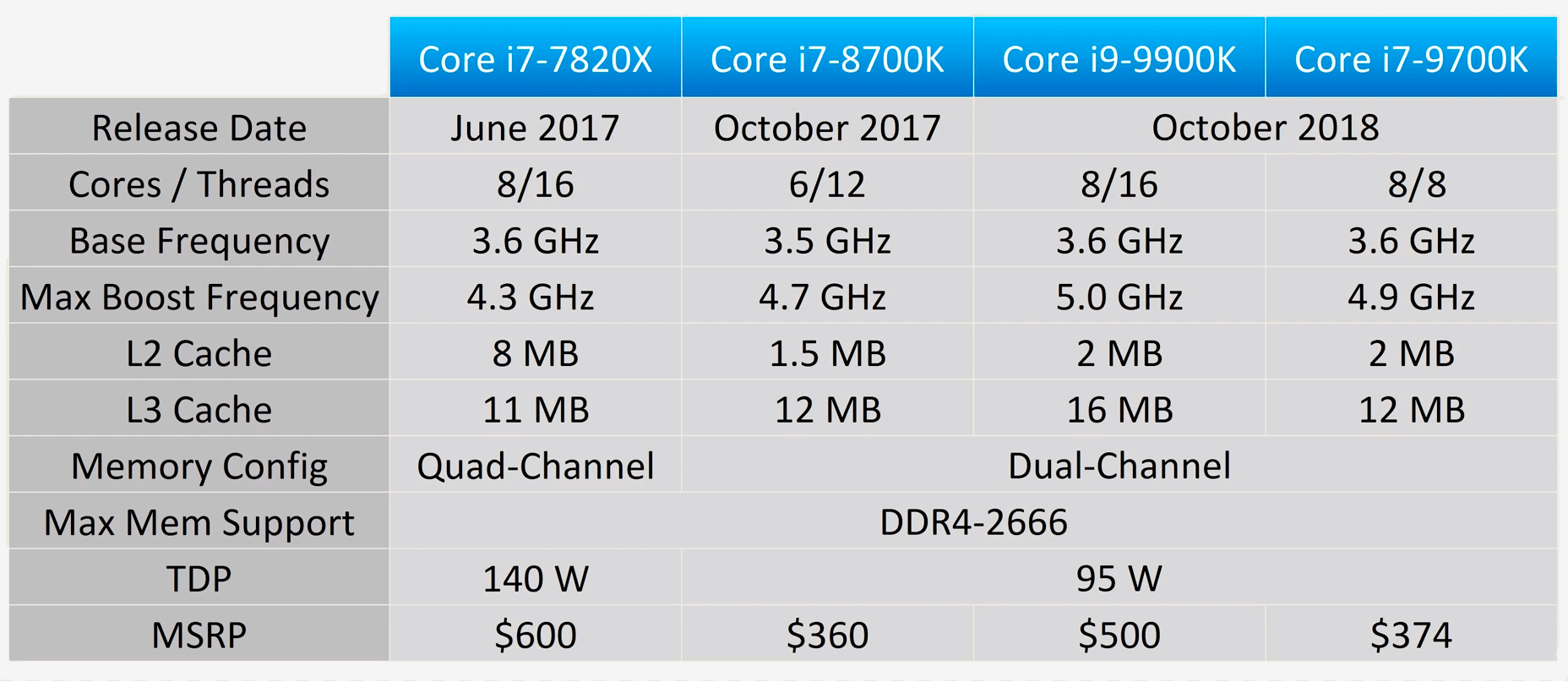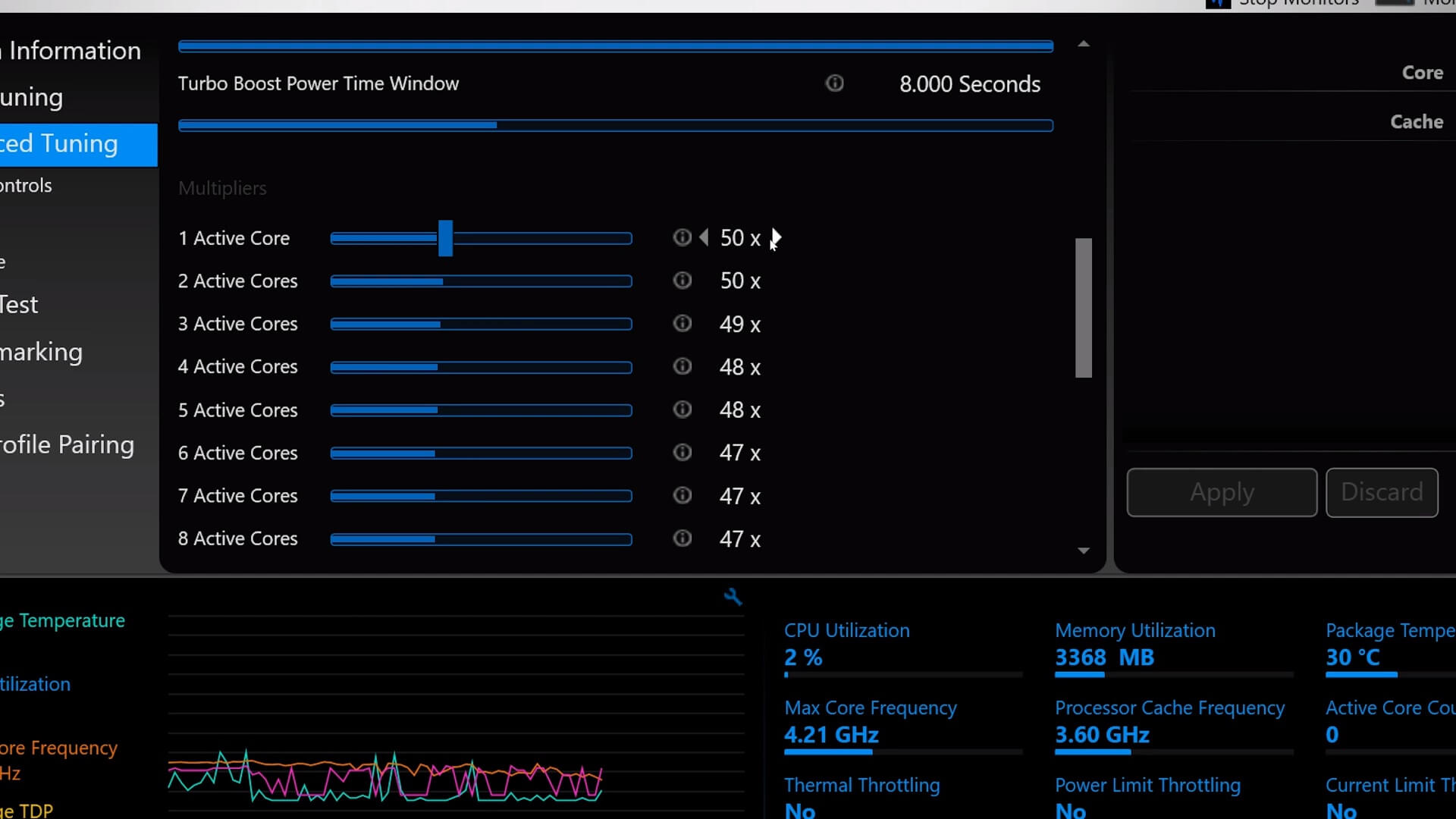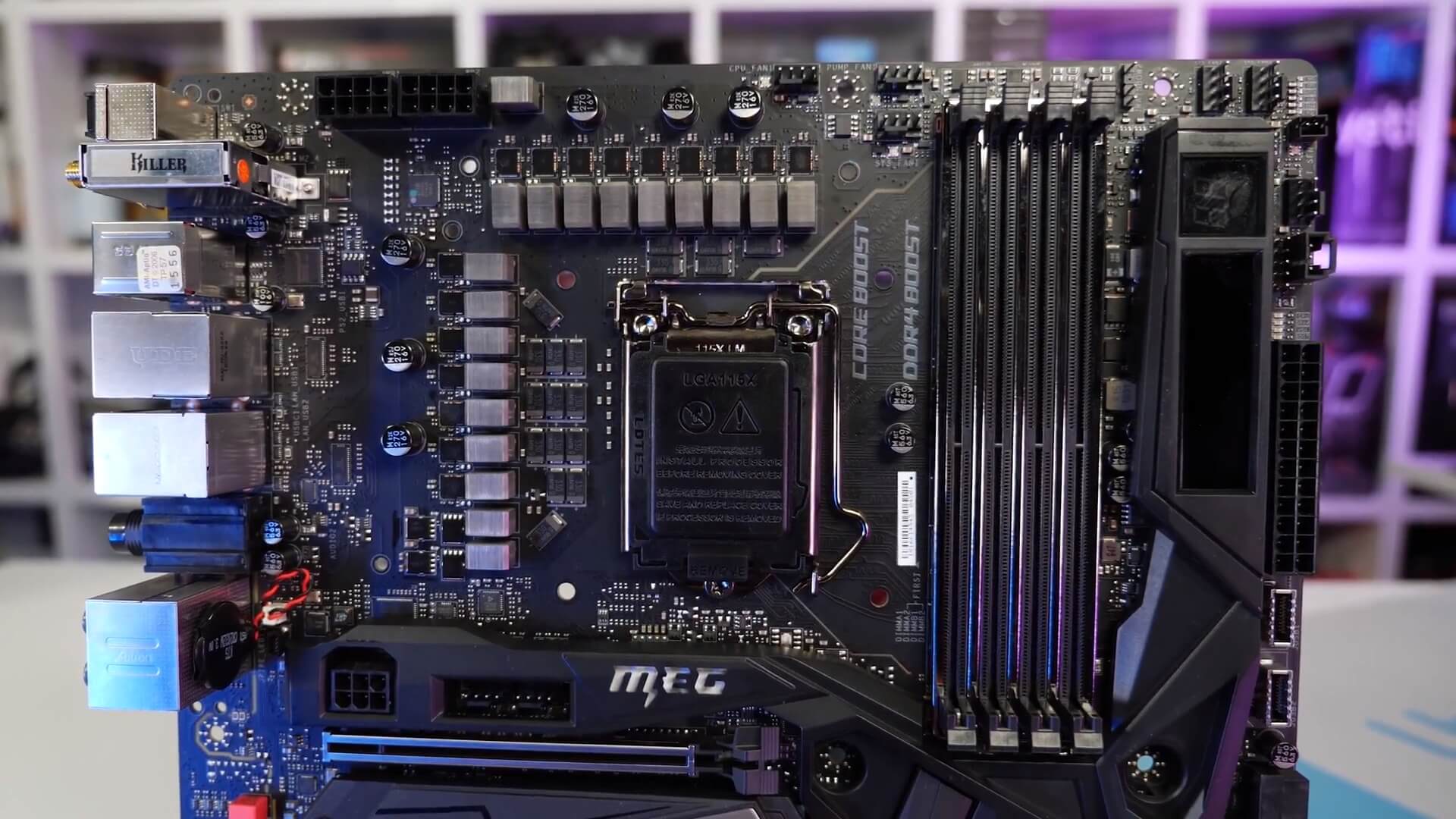In context: Since the Core i9-9900K reviews went live, a few strange anomalies have been spotted, mostly relating to its power and thermal performance. These results stirred up quite a bit of chatter regarding whether or not the 9900K in stock trim really runs at over 80 degrees with high-end cooling or it is more like 60-65 degrees? To better answer that, I guess we have to first define what stock means for the 9900K. Furthermore, if we (or the motherboard) limits just how fast the 9900K will go based on a thermal profile, then is it inhibiting performance?
It's been three weeks since we reviewed the Core i9-9900K and so far availability of the new CPU has been quite limited. And yet despite the fact that you can't buy the Core i9-9900K, we're seriously considering re-reviewing it.
Officially Intel specifies that the Core i9-9900K has a TDP rating of 95 watts. They state an all-core base frequency of at least 3.6 GHz and this is what the TDP is measured from. However, they also state that if just a single core is active, it will operate at 5 GHz. So the two frequencies officially given are a 3.6 GHz base and a maximum boost of 5 GHz, this means there's a 1.4 GHz disparity between the base and turbo boost frequencies.
Now it's important to note that prior to the release of the 8th-gen Core series Intel did specify the all-core turbo frequency. For example, they made it clear that the Core i7-7700K would target and operate at 4.4 GHz when all four cores were under load. However, with the release of the 8th-gen series which brought about the first mainstream 6-core processors from Intel, they made the decision to no longer disclose the all-core turbo frequency.
A pre-defined maximum all-core frequency still existed however. For the 8700K it was 4.3 GHz, Intel was just no longer specifying this frequency and therefore no longer had to guarantee that it would be achieved by all hardware configurations, for example with lower end motherboards.
The 8700K was right on the edge of the 95-watt TDP and depending on motherboard quality this figure could be exceeded. Under optimal conditions with optimised voltages the 8700K pushes package TDP to roughly 95 watts at the 4.3 GHz all-core frequency, opposed to the 75 watts the 7700K maxes out at with its 4.4 GHz all-core frequency.

So whereas the 7th-gen Core series flagship part came in well under the 95w TDP rating, the 8700K was right on the edge and we saw on lower quality boards that pumped more voltage into the CPU in an effort to maintain stability, the TDP was often pushed well over the 95 watt rating.
Now for the new Core i9-9900K the official default clock multiplier table states that with all 8-cores active it will operate at 4.7 GHz and it achieves this same frequency with 7 and 6 cores active. Then with 5 and 4-cores active will go up to 4.8 GHz, 4.9 GHz with 3-core, and as I said earlier 5 GHz with 1 or 2 cores active. However, as I noted earlier, Intel only states an all-core base frequency of 3.6 GHz and a single core maximum turbo boost frequency of 5 GHz, so what happens between those variables depends on the workload and crucially how long the workload runs for.

For this Intel specifies a time duration for certain power limits, commonly referred to as PL1 and PL2. We've covered this before but in short PL2 is our boost consumption, it defines how much power the CPU can use in bursts and for the 9900K the limit is 119 watts.
Intel says the PL2 power state could be sustained for up to 100 seconds but in reality with the 9900K it's just shy of 30 seconds in our tests, at least on the Z390 boards we've used with the 95-watt TDP enforced. At which point power limit one kicks in limiting the clock frequency to whatever fits within the 95 watt TDP rating, with all 8-cores active that's about 4.0 GHz, rather than the maximum 4.7 GHz that can be achieved without any power limits.
So the problem we have here is motherboard makers for the most part aren't abiding by either of these power limits, instead they are targeting the clock multiplier table. You could say motherboard makers are cheating but we don't think that is it... we still feel Intel is cheating their own spec. There is simply no way all board makers did this on their own, what a mighty big coincidence that would be and surely Asus, MSI, Asrock and Gigabyte all work alongside Intel engineers to create their Z390 motherboards.

Anyway let's not get into that just yet, for now let's look at how badly the TDP rating is getting abused for sustained periods. Here I've tested the 9900K in our Blender workload without any TDP limitations in place using a number of core count configurations. Leaving Hyper-Threading enabled I've tested the 9900K stock with all 8-cores enabled and then 7 more times with a specified number of cores enabled at the BIOS level. I've also set the frequency to met that of Intel's multiplier table.
- With just a single core enabled the 9900K targets 5 GHz and here we see a package TDP of just 35 watts, well under the 95-watt rating. Now please note for all this testing the voltage was held steady at 1.188 volts.
- With 2-cores enabled the 9900K targets 5 GHz and here the package TDP is raised to 49 watts, 49 watts with just 2-cores enabled.
- With 3-cores the frequency drops to 4.9 GHz and this resulted in a package TDP of 66 watts.
- 4-cores targets 4.8 GHz and here we hit 83 watts and already with just half the cores enabled we're not that far off exceeding the specified TDP rating.
Interestingly whereas the 7700K maxed out at 75 watts, the 9900K with the same amount of cores and threads hits 83 watts, an 11% TDP increase though we do also see a 9% increase in clock speed. The rest of that margin can likely be attributed to any changes in voltage along with the much larger L3 cache of the 9900K.
- Of course we're not stopping here, the 9900K is a runaway train at this point hitting a package TDP of 96 watts with 5-cores enabled at 4.8 GHz.
- With 6-cores we drop down to 4.7 GHz and here the TDP hits 114 watts.
- Then 130 watts with 7-cores and technically this shouldn't be possible with Intel's PL2 spec as the limit here is 119 watts.
- Finally 153 watts with 8-cores enabled and at this point we've exceeded the base TDP rating by a little over 60%, and the PL2 short burst spec by almost 30%.
So what happens to clock speeds on a long run test if we enforce the 95 watt TDP?

As expected the single and dual-core configurations still hit 5 GHz, because as we saw previously this sees the 9900K come in under the 95-watt rating. Then with 3 cores active we still hit the targeted 4.9 GHz frequency as this only saw a package TDP of 66 watts.
However, with 4-cores active we see a 50 MHz reduction in frequency with the 95-watt limit in place. This is then extended to 250 MHz with 5-cores active, 350 MHz with 6-cores, 500 MHz with 7-cores and then finally 700 MHz with all 8-core active. That means we're seeing up to a 15% decrease in clock speed for our Blender workload and for less optimally configured motherboards running more voltage this margin will likely increase. I should also note that I'm not using the integrated GPU for any of this testing.
Now, since first reviewing the Core i9-9900K I've tested over a dozen Z390 motherboards, ranging from the cheapest $120 models right up to the much more expensive flagship versions. Out of the box all boards from MSI, Gigabyte and Asrock run without a TDP limit in place, even with the default BIOS configuration.
However this isn't the case for the Asus boards I've used, the default out of the box of cleared BIOS configuration employs the 95-watt TDP limit. To remove it without digging into the power setting and doing so manually you'll need to load an extreme memory profile and then agree to using the Asus optimized settings rather than Intel's. Basically Asus optimized means ignoring the TDP limit and running at the default clock multipliers like all boards from MSI, Gigabyte and Asrock.

Essentially then Intel has two seperate specifications for their high-end CPUs, a TDP limited specification that they loosely define or a clock multiplier table specification, and enabling one means it's impossible to achieve the other. The TDP limit means you won't reached the intended all-core clock speed while the clock multiplier table spec means you're running well above the TDP.
This seems to have caused a divide on how we should test Intel processors... should we make them abide by the specified TDP rating, just as AMD processors do, or should we tested them running at the maximum allowed clock multipliers?
We've heard a lot of back and forth from AMD and Intel fans, and watching how opinions from both camps have changed over the past year has been interesting. For the 8th-gen release AMD's pitchfork crew were shrieking at the top of their lungs for us to test with the 95-watt TDP limit in place, while the blue man group members disagreed. Now with the 9th-gen series it's all over the place, some AMD extremists now want the TDP removed, "let the 9900K burn" they say.
Essentially Intel has two seperate specifications for their high-end CPUs... a TDP limited specification that they loosely define or a clock multiplier table specification, and enabling one means it's impossible to achieve the other.
On the other hand, some Intel extremists now say that motherboard markers aren't abiding by the Intel spec and are causing the 9900K to run too hot. That's partly true, though I'm not convinced motherboard makers are really the ones at fault here.
Testing with the 95-watt TDP spec also introduces a few testing issues for reviewers. You can no longer show just a single run or worst yet the best Cinebench R15 run with an Intel CPU, same goes for V-Ray or any other short rendering test. Ideally you'd need to show short and long run results for all applications as performance could vary by up to 20%.
So, what do you think? Is showing 95-watt limited results misleading, even if it's included alongside unlimited testing? We think the best course of action is to revisit the 9900K with both unlimited and 95-watt limited results, but we're keen to see what you think is appropriate and your input will influence how we test Intel CPUs moving forward.
Update: We have re-reviewed the i9-9900K.
